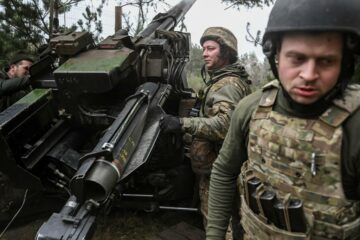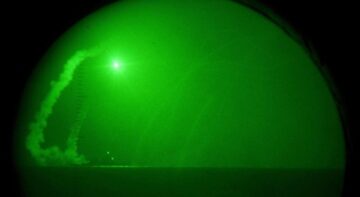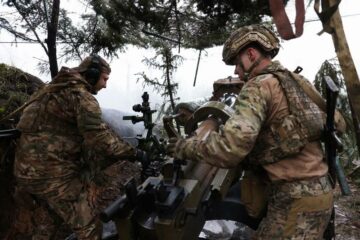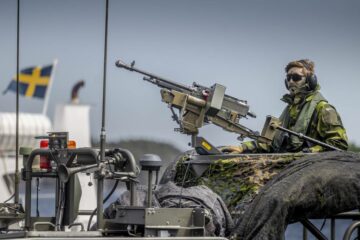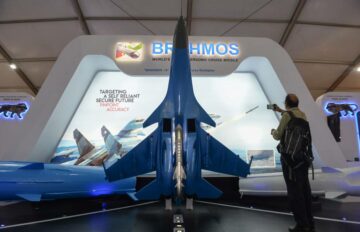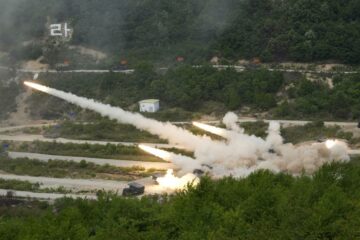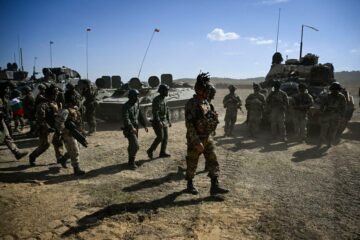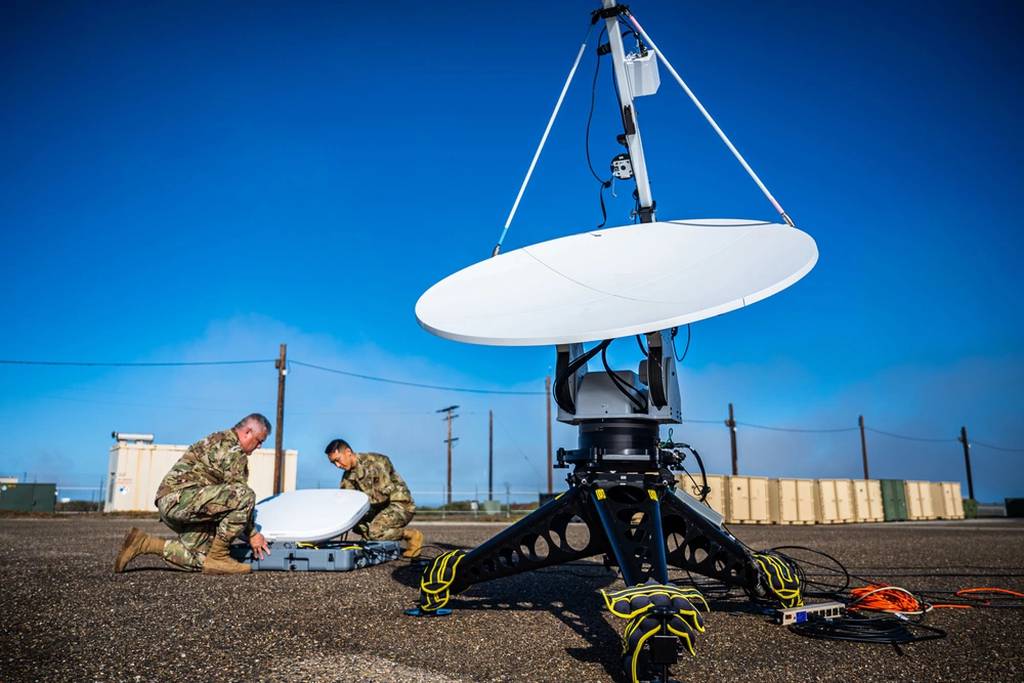
One of the oft repeated phrases by political and military leaders during National Defense Authorization Act and defense budget rollout is how important it is to get the bill passed so we give our men and women in uniform everything they need to be successful in deterrence and warfighting. Providing what our armed forces require, given the threats facing our nation, is very important and should be the main focus of Congress and the White House. Unfortunately, the Space Force has not been given all it requires to deter and/or win a war for space superiority in great power conflict.
First, current policy has restrained the Space Force from generating the requirements and resource requests necessary to achieve a credible deterrence and warfighting Space Force. Instead, current policy and strategic frameworks like the U.S. Space Priorities Framework focuses the service on enable and support missions for the joint force (i.e., terrestrial military operations). As a result, the service has not developed space deterrence and warfighting force postures that enable space superiority against our adversaries, but rather have continued on the path of graceful degradation via under attack.
This type of thinking, while arguably rational for the 1990s, is wholly inadequate for an era of rapidly developing and deploying Chinese, Russian, and Iranian space forces and ongoing counterspace operations against the U.S. and its allies. These operations, while non-kinetic, occur “every single day,” according to former vice chief of space operations, Gen. David Thompson.
Second, due to this mentality of supporting the joint force, the service is not deploying the weapons systems necessary for a credible deterrent against a near peer like China. Regardless of what side of the counter-space continuum you look (non-kinetic or kinetic), the Space Force either does not have the variety of anti-satellite and counter-space weapons systems to match what the adversary is deploying, or lacks sufficient numbers to have any real effect in a major great power conflict.
For example, China has deployed or is expected to deploy in the near term kinetic anti-satellite missile units; jammers of various kinds (satellite communications, GPS, etc.); and on-orbit anti-satellite technology, including those capable of aggressive rendezvous and proximity operations as well as the ability to capture and move U.S. and allied assets from their orbital posts and into disposal orbits.
If that was not enough, China has also demonstrated its capability and willingness to use a fractional orbital bombardment system equipped with hypersonic glide vehicles with either conventional or nuclear payloads. This provides China with escalation dominance, which is key to credible deterrence in a great power competition environment.
As an example of how we lack credible numbers of counter-space weapons, the Space Force has a few Counter Communications System and Bounty Hunter jamming systems. These weapons systems, while supporting combatant commander requirements over the past few decades, exist in insufficient numbers to have much effect in a great power war in the Pacific. Even if all of these units were deployed to the Indo-Pacific region, there are not enough to address all adversarial orbital targets overflying the operating areas of U.S. terrestrial forces and our allies. As a result, we are putting our guardians in harm’s way without sufficient equipment to achieve meaningful effects in combat, much less the ability to gain space superiority in a high-stakes conflict.
Third is the budget for the service. While many have lauded the largest budget increases for the Space Force, the priorities and resources are insufficient. The majority of the budget is research and development, which is fine, but it is beyond time to move more capability into operational and maintenance lines and deploy capabilities for deterrence and warfighting, not just for continued space-support missions.
Finally, the Space Force is hindered by law from recruiting sufficient military personnel due to congressional limitations imposed before its establishment in 2019. This has led to insufficient numbers of trained personnel to operate space support, space deterrence and warfighting systems needed to defend American interests in space. Thus, a never-ending cycle of re-optimizing the service or military departments happens every few years to make it look like major changes are being made, when in reality the service is just trying to find ways to do more with less.
This passive and inadequate approach will cede freedom of access and maneuver advantage in space to the adversaries of this nation and its friends. Congress should act quickly to remedy this situation and require the development of true warfighting capabilities necessary for the Space Force to be a fully coequal provider of combat forces in the joint force and not simply a service provider.
The Space Force was established to address the threat in space, not to be the help desk of the other services. The Space Force must have the funding, personnel and, most of all, the weapons to address the threats facing our nation today and into the future.
Christopher Stone is a senior fellow for space deterrence studies at the National Institute for Deterrence Studies think tank. He previously served as special assistant to the deputy assistant secretary of defense for space policy. This commentary does not necessarily reflect the position of the U.S. Defense Department.
- SEO Powered Content & PR Distribution. Get Amplified Today.
- PlatoData.Network Vertical Generative Ai. Empower Yourself. Access Here.
- PlatoAiStream. Web3 Intelligence. Knowledge Amplified. Access Here.
- PlatoESG. Carbon, CleanTech, Energy, Environment, Solar, Waste Management. Access Here.
- PlatoHealth. Biotech and Clinical Trials Intelligence. Access Here.
- Source: https://www.defensenews.com/opinion/2024/01/16/us-space-force-needs-more-to-effectively-deter-win-wars/
- :has
- :is
- :not
- 2019
- 70
- a
- ability
- access
- According
- Achieve
- Act
- address
- ADvantage
- adversarial
- against
- aggressive
- All
- also
- American
- an
- and
- any
- approach
- ARE
- areas
- arguably
- armed
- AS
- Assets
- Assistant
- At
- authorization
- BE
- been
- before
- being
- Beyond
- Bill
- bounty
- budget
- but
- by
- capabilities
- capability
- capable
- Changes
- chief
- China
- chinese
- combat
- Commentary
- Communications
- competition
- conflict
- Congress
- Congressional
- continued
- Continuum
- conventional
- Counter
- credible
- Current
- cycle
- David
- decades
- Defense
- Defense Department
- demonstrated
- Department
- departments
- deploy
- deployed
- deploying
- deputy
- desk
- deterrent
- developed
- developing
- Development
- disposal
- do
- does
- due
- during
- e
- effect
- effectively
- effects
- either
- enable
- enough
- Environment
- equipment
- equipped
- Era
- established
- establishment
- etc
- Even
- Every
- everything
- example
- exist
- expected
- facing
- fellow
- few
- Find
- fine
- Focus
- focuses
- For
- Force
- Forces
- frameworks
- Freedom
- friends
- from
- fully
- funding
- future
- Gain
- Gen
- generating
- get
- Give
- given
- gps
- Graceful
- great
- great power
- Guardians
- happens
- Have
- he
- help
- House
- How
- HTTPS
- hunter
- i
- if
- images
- important
- imposed
- in
- Including
- Increases
- instead
- Institute
- insufficient
- interests
- into
- Iranian
- IT
- ITS
- joint
- jpg
- just
- Key
- Lack
- largest
- Law
- leaders
- Led
- less
- like
- limitations
- lines
- Look
- look like
- made
- Main
- maintenance
- major
- Majority
- make
- many
- Match
- meaningful
- Men
- Military
- missions
- more
- most
- move
- much
- must
- nation
- National
- Near
- necessarily
- necessary
- Need
- needed
- needs
- nuclear
- numbers
- occur
- of
- on
- ongoing
- operate
- operating
- operational
- Operations
- or
- Other
- our
- over
- Pacific
- passed
- passive
- past
- path
- peer
- Personnel
- phrases
- plato
- Plato Data Intelligence
- PlatoData
- policy
- political
- position
- Posts
- power
- previously
- provider
- provides
- providing
- Putting
- quickly
- rapidly
- rather
- Rational
- real
- Reality
- recruiting
- reflect
- Regardless
- region
- repeated
- requests
- require
- Requirements
- requires
- research
- resource
- Resources
- result
- russian
- s
- satellite
- secretary
- senior
- served
- service
- Service Provider
- Services
- should
- side
- simply
- single
- situation
- So
- Space
- Space Force
- special
- STONE
- Strategic
- studies
- successful
- sufficient
- support
- Supporting
- system
- Systems
- tank
- targets
- Technology
- term
- terrestrial
- that
- The
- The Future
- the joint
- their
- There.
- These
- they
- Think
- think tank
- Thinking
- this
- those
- threat
- threats
- Thus
- time
- to
- today
- trained
- true
- trying
- type
- u.s.
- under
- unfortunately
- units
- us
- use
- variety
- various
- Vehicles
- very
- via
- vice
- war
- was
- Way..
- ways
- we
- Weapons
- WELL
- were
- What
- when
- which
- while
- white
- White House
- wholly
- will
- Willingness
- win
- with
- without
- Women
- years
- you
- zephyrnet

